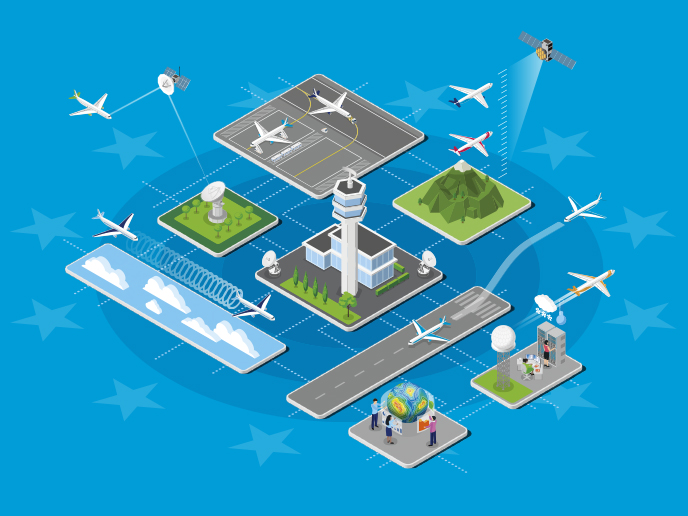Blues skies ahead: Sustainable innovation powered by SESAR
The European Green Deal launched by the European Commission in December 2019 aims to create the world’s first climate-neutral bloc by 2050. This ambitious target calls for deep-rooted change across the aviation sector and places significantly stronger focus on the environmental impact of flying. Multiple technology pathways are required to achieve this, one of which is the digital transformation of air traffic management. This is where SESAR innovation comes into play. Over the past decade, the SESAR JU has worked to improve the environmental footprint of air traffic management, from CO2 and non-CO2 emissions to noise and local air quality. The unique public-private partnership is looking at every phase of the flight and airspace use, developing technologies to eliminate fuel inefficiencies and investing in synchronised data exchange and operations on the ground and in the air. The ambition is to reduce average CO2 emissions per flight by 0.8-1.6 tonnes by 2035, roughly equivalent to planting 500 million trees. This target takes into account the entire flight, from gate to gate. The SESAR JU is conducting fundamental and industrial research as well as large-scale demonstrations to advance new concepts and innovations and accelerate their implementation, represented by the 10 projects highlighted in this Pack. The projects are co-funded by Horizon Europe and the Connecting Europe Facility, and are carried out within the framework of the Digital European Sky, the ambitious research and innovation programme of the SESAR 3 JU. Their focus includes improved air traffic management for more efficient flights GALAAD and CONCERTO, better aircraft positioning technology to allow dynamic approach patterns, advanced route planning DYN-MARS and low-fuel profiles Green-GEAR, better understanding of the conditions that lead to persistent contrails E-CONTRAIL and CICONIA, wake energy retrieval GEESE, as well as broad investigations into how climate change will impact aviation – and vice versa AEROPLANE. Two demonstrators, ECHOES and HERON, launched in 2021 and funded within the framework of the Connecting Europe Facility and the European Climate, Infrastructure and Environment Executive Agency (CINEA), are supporting the ambitions of the Green Deal and enable energy-efficient flying, gate to gate. To date, the partnership has delivered over 136 solutions for implementation, many of which offer direct and indirect benefits for the environment, with more solutions in the pipeline. The SESAR Solutions Catalogue, now fully digital, outlines these solutions. Further SESAR calls for projects are expected, building on existing achievements and delivering a continuous flow of tangible solutions for the environment. Together, they will help make Europe the most efficient and environmentally friendly sky to fly in the world.



